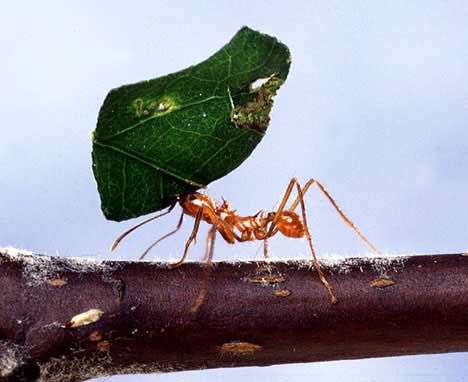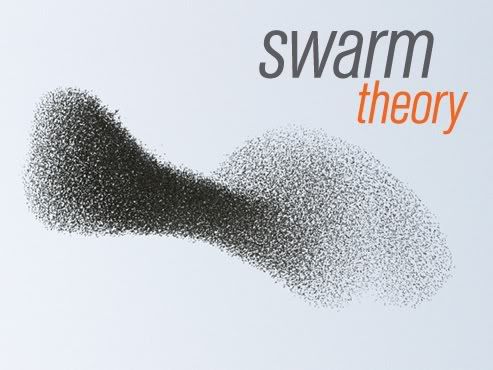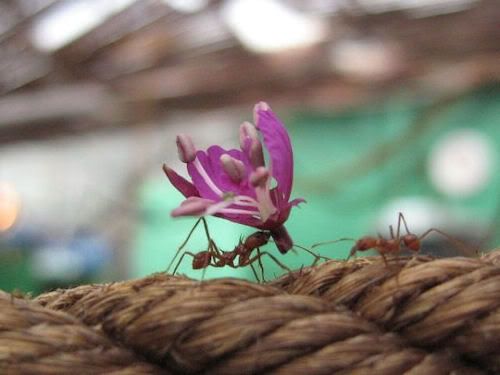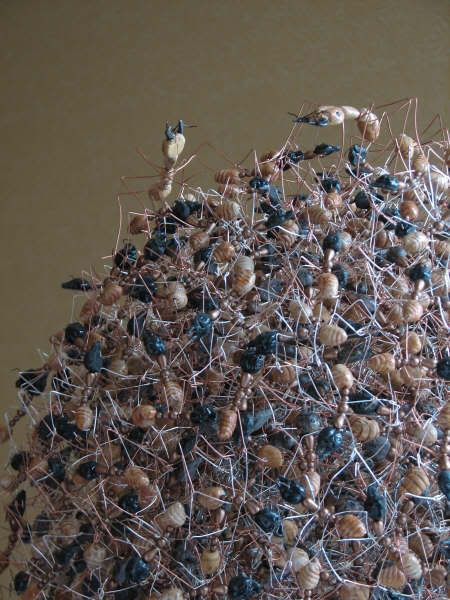( – promoted by Nightprowlkitty)
The Ant and the Grasshopper Fable
An Aesop’s Fable
In a field one summer’s day a Grasshopper was hopping about, chirping and singing to its heart’s content. An Ant passed by, bearing along with great toil an ear of corn he was taking to the nest.
“Why not come and chat with me,” said the Grasshopper, “instead of toiling and moiling in that way?”
“I am helping to lay up food for the winter,” said the Ant, “and recommend you to do the same.”
“Why bother about winter?” said the Grasshopper; we have got plenty of food at present.” But the Ant went on its way and continued its toil. When the winter came the Grasshopper had no food and found itself dying of hunger, while it saw the ants distributing every day corn and grain from the stores they had collected in the summer.
Then the Grasshopper knew:
[The Moral of the Story: ]
It is best to prepare for the days of necessity.
http://www.aesops-fables.org.u…
Them damn Socialist Ants! — always trying to feed their Fellow Ants!
They’re enough to ruin a lavish picnic …

We’d be wise to study the meager ants, to learn their ways. Afterall they have succeeded at “molding” this Planet, far longer than we can dare dream of doing. And when it comes to Getting Work Done — They Wrote the Book!
ANTS
Communication, Pheromones, Behavior and Organization
Ants have been around for a long time, all the way to the Cretaceous period with the dinosaurs. Today we have roughly 10,000 described species, but there may be more like 15,000.
Ants are very successful insects. Their combined worldwide biomass is probably equal to the human race.
[…]
The number of workers in established colonies can match or surpass the number of people in greater Los Angeles. A super-colony of Formica genus ants in Japan may number close to the population of the United States!
[…]
One reason for the success of ants is their division of labor. Sometimes this manifests in physical differences among worker class
[…]
In many ant species, younger workers spend their time at the center of the nest where it’s safest, tending to the queen and eggs. As the ants age, they take up tasks further out. The oldest ants carry out the most dangerous work, foraging for food outside the nest where they are more likely to meet their doom. However, it has been determined that in many ants, the correlation between age and task is not so strong, where the division of labor is quite flexible.

Given that the average ant, has the I.Q. of … well, An Ant! — How in the World do they manage to get SO much done, with SO Little Direction. They don’t spend their days, arguing over ‘Who has the Right to do What’ — They’re just constantly busy building a better Ant World, for Future Generations …

Well there’s a School of Thought being established, by Human Scientists, that models the Ant’s amazing Productivity, as a Species. It seems the key to their success lies in their Numbers, and their Sniffers, not the size their Grey Matter. Many successful Species in Nature have tapped into this Herding Instinct, which we are beginning to label as Swarm Intelligence.

Swarm Intelligence
wikipedia.org
Natural examples of SI [Swarm Intelligence] include ant colonies, bird flocking, animal herding, bacterial growth, and fish schooling.
[…]
Ant colony optimization (ACO) is a class of optimization algorithms modeled on the actions of an ant colony. ACO methods are useful in problems that need to find paths to goals.
Makes you wonder, why Humans have so much trouble, “finding the best paths to goals” — when even Fish can find their Feeding grounds.
And Ants, well they’re “smart enough” to actually take advantage of Feed-Back Loops in Nature — NOT Ignore them, as Humans have an amazing propensity to do!
Ant Colony Optimization
wikipedia.org
Summary
In the real world, ants (initially) wander randomly, and upon finding food return to their colony while laying down pheromone trails. If other ants find such a path, they are likely not to keep traveling at random, but to instead follow the trail, returning and reinforcing it if they eventually find food.Over time, however, the pheromone trail starts to evaporate, thus reducing its attractive strength. The more time it takes for an ant to travel down the path and back again, the more time the pheromones have to evaporate. A short path, by comparison, gets marched over faster, and thus the pheromone density remains high as it is laid on the path as fast as it can evaporate.
[…]
Thus, when one ant finds a good (i.e., short) path from the colony to a food source, other ants are more likely to follow that path, and positive feedback eventually leads all the ants following a single path.
In many ways, ‘The Blogs’ mimic this Swarming behavior, of “finding the Shortest Path to a Goal”. (I’ll leave it you fine ‘worker ant bloggers’, to expound about the numerous “messaging analogies”).

Perhaps too ‘The Blogs’ benefit from these other Evolutionary Advantages, which seem to be the hallmarks of Intelligent Swarms?
Swarm Intelligence
By hassam
There are several advantages of swarm intelligence:
— Flexibility, is a group that can be compatible in a dynamic environment
— Robustness, is irrespective of individual misbehavior or loss, the group can accomplish its tasks
— Self-organization, is inherent parallelism or distributed action with little or no supervision.
Mind you though, the Signaling Feedback is NOT all Positive!
There are Negative Reinforcing Signals too, in an Adaptive Swarm — so be careful with those ‘Donut’ Ratings, Ok? … Not all ‘Random Trails’ being explored here, are really ‘Earth-shaking’ Events. They could just be a stroll in the park.

Animal Behavior/Pheromones in ants and bees
Ants produce numerous different pheromones, each with its own distinct purpose. Ants secrete pheromones to attract mates, to signal danger to the colony, or to give directions about a location. Other pheromones act as deterrents keeping out unwanted ants from foreign colonies or preying insectivores. Still other pheromones communicate ants to congregate.
This explains how assiduous ants exercise remarkable cooperation in building a colony. Pheromones maintain the cohesiveness and organization of the complex ant communities. Certain types, such as alarm pheromones, produce a “releaser effect”, which induces a quick response and may be used to tell other ants to evacuate a dangerous area such as an approaching lawnmower. For example, when a spider approaches an ant will release alarm pheromones that alert all the other ants.
Of Course now, if I could only convince those “worker bees” at my Day Job, to ‘cut the crap’, and start “Finding the Shortest Path” — things would be a LOT less frustrating — and maybe We’d FINALLY START TO GET SOMETHING DONE! … there IS a Mission Statement, afterall.

But alas, the Message Trails left by Humans, are not always so Clear Cut, and to the point, as our Adaptive Cousins — the lowly Ants!
[The Moral of the Story: ]
It is best to prepare for the days of necessity.
for you never know, when that next storm, will set in.

Or WHO will find that Shortest Path, to the Goal.
(if we can even agree on what those Goals are … that is.)



15 comments
Skip to comment form
Author
it kind of seems hopeless …
still we blog on …
in class this week. Although, what insects are doing in class, I have no idea.
by these wily ants. They are winning so far. I’m not using any poison, I don’t use it as I’m organic lol.. I’m not adverse to killing them but what I really want is for them to stop the long marching lines from the back of the yard through the foundation and into my house. It really does shock and awe me to watch them they are persistent and organized and seem unstoppable. I am going to resort a kind of poison, boric acid and powdered sugar which they take back to the colony and it kills them there. I used to find there colony ad pour teakettles of boiling water on them.
… the very first films Charlton Heston appeared in, called The Naked Jungle.
I was too little to understand much of the “grown-up” characters and plot—what I found fascinating was the huge, inexorably advancing “Marbunta” ant colony that devoured everything in its path.